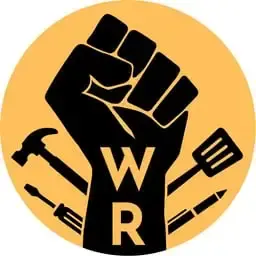I don’t like the system, so I am designing a new protocol to try to ensure everyone can contribute to progress and benefit from it. It is open for anyone to implement or extend. You want to check this out.
Key Features:
✅ Decentralized governance – Everyone has a voice.
✅ Transparent work allocation – Jobs match skills, not status.
✅ Non-speculative value system – No artificial inflation or wealth hoarding.
Calling on contributors, developers, and visionaries to help refine and implement this system. We need to build a future where the world functions better.
🔗 Read more: https://github.com/Coexistion/coexistion, https://codeberg.org/coexistion/Coexistion, https://gitlab.com/coexistion/coexistion


Challenges and Concerns
Implementation Complexity: While the protocol aims to simplify decentralized systems, the actual implementation of a robust and efficient decentralized framework can be complex. Ensuring scalability, security, and user-friendliness will be significant challenges, especially as the system grows.
Governance and Decision-Making: Achieving true democratic governance in a decentralized system can be difficult. Ensuring that all voices are heard and that decisions are made effectively without falling into the trap of inefficiency or gridlock is a critical concern. The proposed consensus-based decision-making might face challenges in practice, particularly in larger groups.
Economic Viability: The non-speculative value system represents an interesting shift from traditional economic models. However, establishing a stable and sustainable economic model that rewards contributions equitably while preventing exploitation and ensuring long-term viability is a complex task. The challenge of ensuring that value is accurately tracked and distributed can be significant.
Adoption and Transition: The transition from traditional economic systems to a decentralized framework like the Coexistion Protocol will require significant cultural and systemic shifts. Gaining buy-in from established institutions, businesses, and individuals accustomed to traditional hierarchical structures may be challenging. Moreover, potential resistance from those who benefit from the current power dynamics may hinder adoption.
Regulatory Environment: Decentralized systems often face uncertain regulatory landscapes, and the Coexistion Protocol would likely attract scrutiny from regulators. Navigating legal frameworks while maintaining the principles of decentralization and inclusivity could be a significant hurdle.
Technological Barriers: The reliance on technology means that access to the Coexistion Protocol could be limited for those without the necessary digital literacy or access to technology. Ensuring equitable access to the system will be crucial for achieving its goals.
Conclusion
The Coexistion Protocol embodies a visionary approach to rethinking economic systems, focusing on fairness, transparency, and decentralization. While its principles resonate with the evolving landscape of decentralized technologies and the growing desire for equitable economic participation, the feasibility of its implementation is contingent on addressing several complex challenges. The success of such a protocol will depend on careful planning, user experience design, robust governance structures, and a willingness to adapt to the lessons learned during implementation.
In summary, while the Coexistion Protocol presents a realistic and hopeful blueprint for the future, its practicality hinges on overcoming significant hurdles related to implementation, governance, economic sustainability, adoption, and regulatory compliance.